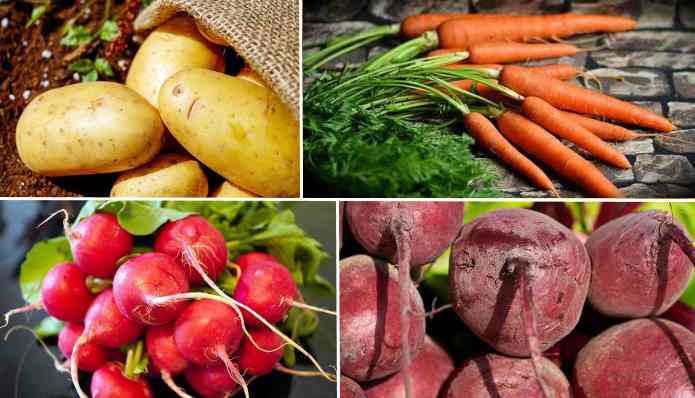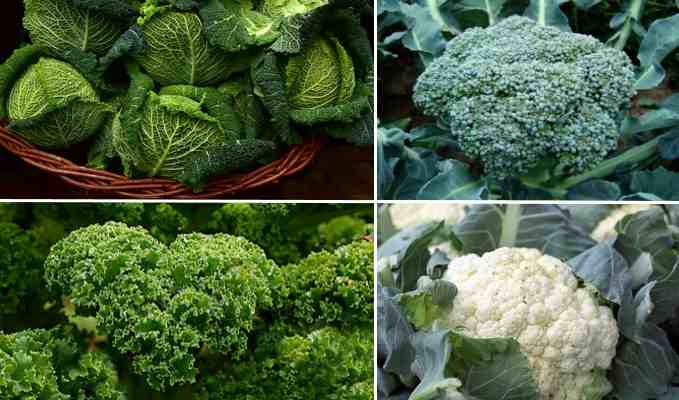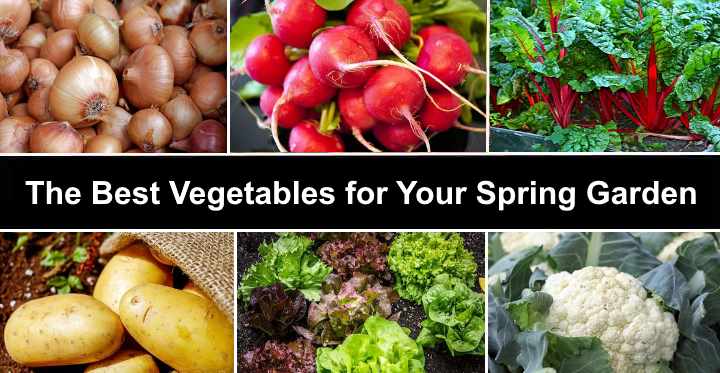In the spring, you should plant your vegetables when they’re at their best. You can begin sowing seeds, planting bulbs, and getting root vegetables in the ground once the weather warms after the cold winter months. In the spring, choose vegetables that can tolerate mild frosts, warm sunny days, and chilly evenings to plant. Early summer might see you harvest lettuce, kale, carrots, peas, and radishes if you plant vegetables at the right time.
In the spring, after the last frost, it’s time to plant veggies. In order for your spring vegetables to thrive, you’ll need to prepare the soil for planting and design a vegetable patch layout. Planting spring flowers and vegetables together to attract pollinators is also a smart idea.
In this manner, you can help ensure that your spring-planted veggies flourish. This is a guide to preparing your spring garden for a massive vegetable harvest. You’ll discover what kinds of veggies to plant in the spring and how to keep them healthy. You’ll also get tips on garden designing.
When to Plant Spring Garden
Planting vegetables in your spring garden after the last frost is the optimum time. To begin planning your spring garden, you should check the USDA Hardiness Zone Map. Starting most spring veggies indoors is recommended. Two weeks before you plan to plant, you’ll also have to start preparing your garden soil.
How to Choose the Best Plants for a Spring Garden
Plants that are hardy in the spring should be frost tolerant. Spring crops that do well in both cold and warm weather are often the most successful. It’s best to cover the freshly planted vegetables if you get unexpected snow or frost after planting. After the snow has melted, certain crops may be sown right into the ground.
You’ll need to start at least four weeks before planting in the ground for other spring-planting vegetables, such as asparagus and beans. In early March, many root vegetables may be grown in the soil.
The Best Plants in a Spring Garden – Overview
Choosing the finest vegetables for your spring garden is critical. Kale, spinach, onions, peas, turnips, radishes, and collards are the first vegetables to be planted in the spring garden after the last frost. Start your vegetables as seed indoors first if you want to grow them in the spring, such as cabbage, broccoli, cauliflower, and Brussel sprouts. Carrots, potatoes, beets, and Swiss chard may all be planted directly in the ground when the spring weather improves.
Moreover, near or in your spring garden, it’s a good idea to plant early-blooming flowers. Pansies, peonies, hardy geraniums, violas, and winter aconite are among the best flowering plants that bloom in the spring. While your veggies are growing, these lovely flowers add color and visual appeal. Moreover, they’ll help your vegetable crop flourish by attracting pollinators.
How to Prepare the Soil in Spring Garden
The right preparation for a healthy spring vegetable crop begins. Dig up 8″ to 10″ (20 – 25 cm) of earth with a shovel and turn it over early in the season to prepare the soil for spring planting. Turn the soil over again three weeks before you plan on planting anything.
It’s a good idea to add compost and aged manure to the soil when you dig up and turn over the soil. By adding nutrients for optimum development, you ensure that the soil is prepared. The retention of moisture by organic matter is critical for vegetable growth.
Checking the pH levels is another step when preparing to plant vegetables in the spring. To determine if the soil is acidic, neutral, or alkaline, use a pH meter. After that, you can perfect the soil if necessary before planting.
Spring Garden Layout

When designing your spring garden, consider raised beds since they offer easier care. In a spring garden, most vegetables need full sun to flourish. As a result, a spring garden design that takes into account the height of vegetables, soil nutrient requirements, and plant spacing is essential. To help you create your spring garden, here are four popular garden layout ideas:
Planting in rows: Vegetables can be planted in rows in the simplest garden design. Plant vegetables in north-south rows in the northern hemisphere. Grow taller vegetables at the far end of the rows and shorter crops at the near end to ensure maximal sun exposure. Switch the directions if you live in the southern hemisphere.
Four square planting: Dividing a veggie patch into four squares and grouping veggies according to their feeding needs is a popular garden design concept. Rotating crops every year for fresher produce and fewer insect concerns is possible with this sort of vegetable garden arrangement.
Square foot planting layout: One kind of vegetable is grown in each square-foot part of this sort of spring garden arrangement. To determine how many veggies to grow, you’ll need to utilize spacing guidelines for each one.
Block layout in raised beds: By reducing many walkways, the block-style spring garden design boosts productivity. The expanded vegetable beds should be 3–4 feet (1–1.2 meters) broad and as long as necessary. In short, horizontal rows, plant vegetables.
The Best Plants for a Spring Garden
Let’s explore some early-spring garden plants in greater depth. In the spring garden, you’ll discover the most beneficial root vegetables, leafy green veggies, cruciferous veggies, and onion veggies.
The Best Root Vegetables to Plant in Spring Garden

In the spring garden, these are some of the greatest root vegetables to grow:
Potatoes (Solanum tuberosum)
Potatoes are an excellent choice for starting a spring garden. Plant potatoes three to four weeks before the final frost date in mid-March. Plant seed potatoes with eyes up and spaced roughly 6 inches (15 cm) apart in rows. Each planted seed potato should be spaced approximately 12 inches (30 cm) apart.
Put a little mound of straw or grass cuttings around the potato shoots, so that they are approximately 8 inches (20 cm) tall when they reach approximately 4 inches (10 cm). As a result, the potato harvest is guaranteed to be huge. Baby potatoes can be picked two weeks after the vine has blossomed. Otherwise, until the potatoes are ready for harvesting, wait until the vines die back.
Carrots (Dacus carota)
Three to five weeks before the last frost, sow carrot seeds directly in the loamy or sandy spring garden ground. To ensure there is at least 2” (5 cm) between each plant, thin the carrots as they grow. Carrot rows should be spaced 12 inches (30 cm) apart. To avoid the soil from drying out, keep it moist and mulch around the plants. Carrots should be ready to harvest in the summer after being planted in the spring.
Beets (Beta vulgaris)
Beets are simple to grow in a vegetable spring garden. Since they can survive frost and grow quickly in full sunlight, beets should be sown early in the spring. You may sow beets seeds directly in the earth in late spring. When the beets have sprouted, trim them to 2″ (5 cm) apart. The only thing required is thinning the beets’ greens. Sow beet seeds every two to three weeks until mid-summer for a typical harvest of these delicious root veggies.
Radishes (Raphanus raphanistrum sativus)
Radishes are a spicy root vegetable that can be easily grown in a spring garden. Around four weeks before the final frost, sow radishes in early spring. It’s preferable to sow the veggies directly in the ground, as with carrots and beets. To maintain moisture, keep the soil evenly moist and apply a thin layer of mulch. Within three weeks of planting, some radish types are ready. Since they thrive in colder weather, radishes are the best spring vegetable. Radishes are also a good option for late-season harvest.
The Best Leafy Vegetables for Planting in a Spring Garden

In the spring, these are the finest leafy green vegetables to grow:
Lettuce (Lactuca sativa)
The popular cool-season crop lettuce prefers to grow in the spring. Four to six weeks before the last frost, you may begin seed indoors for lettuce. You may also start planting in the earth in the spring, when the temperature is at least 40°F (4°C). Plant lettuce in full sunlight in your garden, as it does with most spring veggies. Before planting, it’s important to prepare the soil well with compost or organic matter.
Spinach (Spinacia oleracea)
Spinach thrives when planted in early spring and is a cold-hardy leafy green vegetable. spinach seed should be planted directly in the ground. As soon as it is feasible to work the ground, sow the spinach seeds. For every foot, you should have around 12 seeds. Mulch the earth and water spinach frequently. One of the vegetables you may cultivate throughout the winter is spinach.
Swiss Chard (Beta vulgaris var. cicla)
This vegetable, also known as chard, is best sown in the spring. Planting the leafy vegetable three weeks before your area’s final frost date is the optimum time. The seeds should be sown up to 1 inch (2.5 cm) deep and 2 inches (5 cm) apart in rich soil.
You may need to thin the seedlings as they grow to about 3 inches (7.5 cm). You can start harvesting the outer leaves and allowing the smaller inner leaves to grow when the leafy vegetables reach a height of about 12″ (30 cm). This enables you to eat the majority of your vegetables throughout the season.
The Best Cruciferous Vegetables for Planting in a Spring Garden

The Brassicaceae family includes cruciferous vegetables. These include a variety of healthy veggies that thrive in chilly weather conditions. In the spring garden, here are the top cruciferous vegetables to grow:
Cabbage (Brassica oleracea)
For beginner gardeners, growing cabbage may be tough. But, to get the most from this crop, cold spring or autumn temperatures are required. Start seeds indoors eight weeks before the last spring frost for planting in a spring garden.
Transplant the seedlings outside two weeks before the final frost date to adapt them for a week. After that, transplant the cabbage seedlings 12 to 24 inches (30 to 60 cm) apart in your garden. Nitrogen-rich fertilizer is required for cabbage to thrive. Soil temperatures between 60°F and 65°F (15°C and 18°C) are ideal for growing cabbage.
Broccoli (Brassica oleracea var. italica)
Broccoli, which belongs to the cabbage family and thrives in chilly conditions, is a cool-season crop. Start seeds indoors eight weeks before the final frost date to grow broccoli as a spring vegetable. Instead, three weeks before the last frost, you may plant broccoli outdoors in the ground. Broccoli should be spaced 12 to 20 inches (30 to 50 cm) apart in the earth. Keep the veggies well-watered and mulch around them to keep the soil cool to encourage healthy development.
Cauliflower (Brassica oleracea var. botrytis)
Cauliflower, like broccoli, has tightly clustered florets that are grown during the winter season. Because it thrives between 60°F and 65°F (15°C to 18°C), cauliflower grows best in the spring. Starting five weeks before the final frost date, grow cauliflower in a spring garden by seed indoors. Lastly, plant 24 inches (60 cm) apart in your spring vegetable garden a week or two later. Cover if necessary against frost.
Kale (Brassica oleracea var. acephala)
In the spring, you may also plant kale, a cruciferous vegetable. If the kale plant develops in chilly weather, the healthy leaves taste better. In spring, as soon as the soil is workable, put kale seeds directly in your garden, ensuring that the veggies get at least six hours of sunlight. To protect tender kale plants from frost, cover them at night. To keep the ground moist, water kale regularly. In early summer, you should be able to harvest Autumn kale.
The Best Allium Vegetables to Plant in a Spring Garden

In the spring, you should plant the following allium vegetables:
Onions (Allium cepa)
In the genus Allium, onions are tough vegetables. Onions can be grown on elevated beds in a spring garden. In the spring, when the chance of frost has passed, sow tiny onion bulbs in the ground to get the best result. To get ready for planting in March or April, start onions from seed indoors in late January or February.
Leeks (Allium ampeloprasum)
Since they can tolerate light frosts as delicate plants, leeks are ideal vegetables to plant in the spring. In the winter, around 12 weeks before your last frost date, it would be ideal to sow leek seeds indoors. It’s a good idea to acclimate the tender plants before transferring them to your vegetable patch. You do it by spending a week or two outside for longer periods. Around the time of your final spring frost, you can begin growing leeks in your garden.
Spring Onions (Scallions)
When grown in spring gardens, scallions thrive. Starting the seeds indoors eight to ten weeks before the last frost would be optimal. Plant the seedlings in the garden after any frost danger has passed in early spring. Plant in well-draining rich soil in a sunny area.
Other Vegetables for Sowing in Spring Garden

For growing in the spring, here are additional kinds of veggies:
Peas (Pisum sativum)
In the spring, peas are one of the first vegetables you may grow outside. Peas, also known as tasty, hardy vegetables that can withstand some snow, are an easy to grow crop. Planting peas between late February and early April is the ideal time. While the soil is still cool, plant spring vegetables in a sunny area and organically rich soil.
Green Beans (Phaseolus vulgaris)
In the spring, when there is no longer a danger of frost, you may plant green beans. Plant the seeds directly in the garden after the soil has reached at least 48°F (9°). To support the burgeoning vines, use poles or a trellis. It’s important to remember that beans don’t need additional nitrogen fertilizer when being grown in a spring garden. Additionally, beans have shallow roots, so be careful while weeding.
Asparagus (Asparagus officinalis)
In the spring, asparagus is one of the most beneficial perennial vegetables. As early as possible in the spring, when the soil is workable, plant asparagus crowns. In well-draining soil that gets plenty of sunlight, plant the spring vegetables. During the first two to three years after asparagus is planted, it’s best to avoid harvesting. Every spring, when the soil temperature increases above 50°F (10°C), asparagus stems will emerge.
Celery (Apium graveolens)
Celery should be planted in the early spring for a summer harvest. To develop, this cold-weather vegetable requires approximately 16 weeks of chilly weather. Sowing celery seeds ten to twelve weeks before the last spring frost date is a good way to start growing celery indoors. When the temperature outside is at least 50°F (10°), you can move celery seedlings outdoors. Celery needs to be watered regularly while growing in the ground. Celery grows for a long time before being harvested in the summer.
